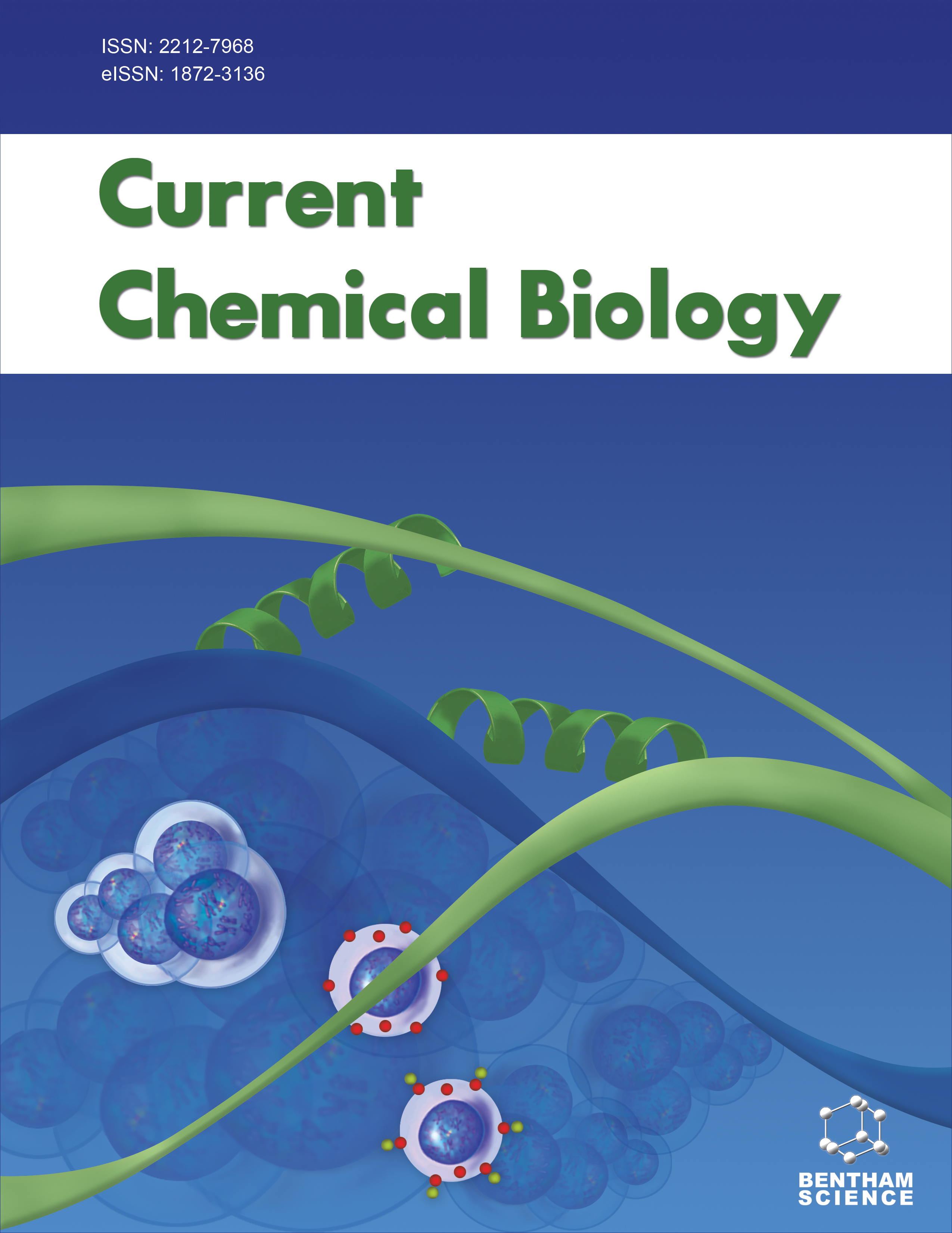- Home
- A-Z Publications
- Current Chemical Biology
- Previous Issues
- Volume 5, Issue 1, 2011
Current Chemical Biology - Volume 5, Issue 1, 2011
Volume 5, Issue 1, 2011
-
-
Introduction of an Artificial Cu Binding Site at the Surface of CA II: Pitfalls of Rational Design Finally Scooped by Serendipity
More LessAuthors: Johannes Schulze Wischeler, Andreas Heine and Gerhard KlebeThe aim of this study was the introduction of an artificial copper center at the surface of carbonic anhydrase II (CA II) which subsequently might be used by azide and alkyne building blocks to catalyze triazole formation following 2+3 dipolar cycloaddition. Several mutants were produced to introduce favorable copper coordinating residues taking model copper-proteins from nature as reference templates. Unfortunately, the Read More
-
-
-
The Mechanism of Interacting Biologically Active Complexes Dehydroepiandrosterone- or Tetrahydrocortisol-Apolipoprotein A-I with DNA and their Role in Enhancement of Gene Expression and Protein Biosynthesis in Hepatocytes
More LessAuthors: Lev Panin, Olga Gimautdinova, Pavel Kuznetsov and Fedor TuzikovDehydroepiandrosterone (DHEA), dehydroepiandrosterone-sulfate (DHEAS) and tetrahydrocortisol (THC) with apolipoprotein A-I form the biologically active complexes able to interact specifically with eukaryotic DNA. This conjugate is highly cooperative and results in local splitting of DNA. Specific binding sites of steroid-apoA-I complexes are the (GCC/GGC)n sequences. At the sites of splitting, single-stranded regions s Read More
-
-
-
An Overview on Thermal Adaptation of Esterases and Lipases Belonging to the HSL Family: New Insight on the Computational Analysis
More LessAuthors: Luigi Mandrich and Donatella de PascaleThe mechanism used by proteins to maintain their thermostability throughout a wide range of temperature has been extensively investigated. Different aspects have been reported which explain protein thermal stability such as protein flexibility, loops length, number of charged residues, hydrophobic and ionic interactions, electrostatic interactions and their pathways, number and dimension of internal cavities. All these fe Read More
-
-
-
Chlamydia-Secreted Proteins in Chlamydial Interactions with Host Cells
More LessAuthors: Guangming Zhong, Lei Lei, Siqi Gong, Chunxie Lu, Manli Qi and Ding ChenChlamydial interactions with host cells rely on chlamydia-secreted proteins, including preexisting and newly synthesized proteins. The preexisting proteins released from EBs participate in both chlamydial entry and intracellular survival at the early stage while the newly synthesized proteins secreted from RBs can both manipulate host cell signaling pathways and promote chlamydial reinfection. Despite the significant progres Read More
-
-
-
Targeting Bcl-2 Family of Proteins: An Important Strategy in Cancer Therapeutics
More LessAuthors: Dinesh T. Makhija, Rakesh R. Somani and Pushkar P. KalantriBCL-2 protein controls the intrinsic pathway of apoptosis and plays a crucial role in governing apoptotic cell death. It regulates mitochondrial outer membrane permeability, leading to the initiation of Caspase cascade. Till date there are 25 genes known to be the members of BCL-2 family. Some of them are pro-apoptotic and some are anti-apoptotic. Over expression of anti-apoptotic BCL-2 proteins has been observed in 80% of b Read More
-
-
-
The Role of STAT 3 in Tissue Fibrosis
More LessAuthors: Li Ma and Shougang ZhuangSignal transducer and activator of transcription 3 (STAT3) is a transcriptional factor and has been implicated in cell proliferation, survival and differentiation. Recent studies demonstrate that STAT3 activity is persistently elevated in patients with some chronic disorders, and required for the development and progression of fibrosis in a variety of tissues including kidney, bone marrow and skin. On the other hand, STAT3 is impl Read More
-
-
-
New Insights into Lipidic Secondary Metabolites in Mycobacteria
More LessAuthors: Isamu Matsunaga and Masahiko SugitaTuberculosis and some other mycobacterial infections remain a tremendous threat to mankind. Pathogenic mycobacteria are able to survive within the hosts even for years, and a chemical and biological basis for their adaptation mechanisms is now beginning to be unraveled. The lipid-rich cell wall of mycobacteria contains structurally diverse glycolipids that comprise the outermost layer and interact directly with the environme Read More
-
-
-
Structure and Antioxidant Catalytic Function of Plant Glutathione Transferases
More LessPlant cytosolic glutathione transferases (GSTs) are an ancient enzyme superfamily with multiple and diverse functions which are important in counteracting biotic and abiotic stresses. GSTs play an important role in catalyzing the conjugation of xenobiotics and endogenous electrophilic compounds with glutathione (GSH), such as pesticides, chemical carcinogens, environmental pollutants, which leads to their detoxificatio Read More
-
Volumes & issues
Most Read This Month
Article
content/journals/ccb
Journal
10
5
false
en


